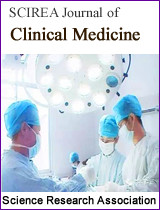A common platform for all systems of medicine
DOI: 10.54647/cm321071 79 Downloads 12732 Views
Author(s)
Abstract
Practitioners of conventional scientific medicine may accept the occasional use of alternative systems but nevertheless keep them at a distance since they do not make sense to the scientifically trained mind. The FDA, the regulatory body in USA for granting recognition to treatment modalities, was expected to address this issue meaningfully, but a coherent understanding about alternative systems of medicine remains elusive. The UG medical student is faced with the situation of having to comprehend the alternate systems, much against the scientific temper that is essential for practicing conventional medicine. While treating any medical condition, three components of patient care can be identified in both conventional and alternative systems of medicine that respectively target the structure (body), influence the thought (mind) and connect with the feeling (spirit) of the patient. With respect to conventional medicine the three components may be termed as: Era 1 or Body Medicine, Era 2 or Mind-Body Medicine, and Era 3 or Mind-Body-Spirit Medicine. Each of these Era 1, Era 2 and Era 3 components can be viewed as ‘quanta’ of different eras, acting simultaneously on the same patient, with each ‘quantum’ having its effect independent of what accompanies it. For students of conventional medicine, some familiarity with the theory concerning the ‘body’ component of alternative systems will suffice, since the ‘mind’ and ‘spirit’ components are common to all. Taking a ‘quantum view of medicine’ encourages a more purposeful and balanced use of all the three components by everyone.
Keywords
conventional medicine, alternative medicine, scientific temper, quantum view, common platform
Cite this paper
Vijayaraghavan Padmanabhan,
A common platform for all systems of medicine
, SCIREA Journal of Clinical Medicine.
Volume 8, Issue 3, June 2023 | PP. 176-180.
10.54647/cm321071
References
| [ 1 ] | List of forms of alternative medicine. Wikipedia. Available from: https://en.wikipedia.org/wiki/List_of_forms_of_alternative_medicine [Last accessed on 2023 April 2] |
| [ 2 ] | The role of complementary and alternative medicine. E Ernst. BMJ 2000 Nov 4; 321(7269): 1133–1135. DOI: 10.1136/bmj.321.7269.1133 |
| [ 3 ] | Tricia M Hwang. FDA and the Challenge of Alternative Medicine: Realistic Assessments and Regulatory Flexibility. 1997. Available from: https://dash.harvard.edu/bitstream/handle/1/8852106/Tricia_M_Hwang.pdf?sequence=1 [Last accessed on 2023 April 2] |
| [ 4 ] | 7 days AYUSH internship to stay for MBBS students. Medical Dialogues, Dec 2022. Available from: https://medicaldialogues.in/health-news/nmc/7-days-ayush-internship-to-stay-for-mbbs-students-85416 [Last accessed on April 2] |
| [ 5 ] | Larry Dossey. A Conversation About the Future of Medicine. Reinventing Medicine, 2000. Available from: https://www.equilibrium-e3.com/images/PDF/A%20Conversation%20About%20the%20Future%20of%20Medicine%20with%20Larry%20Dosey.pdf [Last accessed on 2023 April 2] |
| [ 6 ] | Vijayaraghavan P. Improving the quality of health from within. Futurehealth.org 2012. Available from: https://www.futurehealth.org/populum/page.php?f=Improving-the-Quality-of-H-by-Vijayaraghavan-Pad-110501-893.html [Last accessed on 2023 April 2] |
| [ 7 ] | T C Ewer, D E Stewart Improvement in bronchial hyper-responsiveness in patients with moderate asthma after treatment with a hypnotic technique: a randomized control trial. BMJ (Clin Res Ed). 1986 Nov 1;293(6555):1129-32. DOI: 10.1136/bmj.293.6555.1129. |

